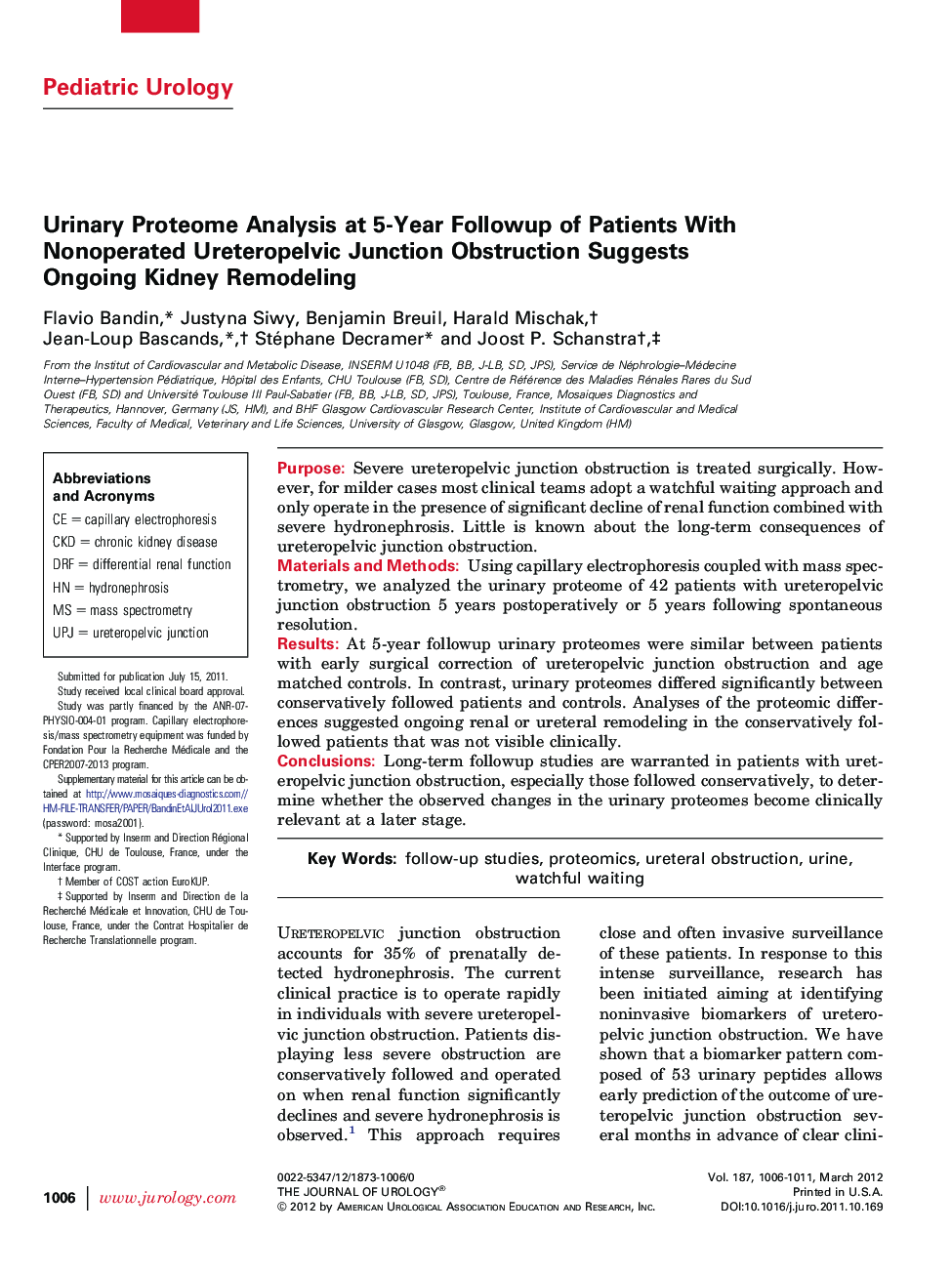| Article ID | Journal | Published Year | Pages | File Type |
|---|---|---|---|---|
| 3868887 | The Journal of Urology | 2012 | 6 Pages |
PurposeSevere ureteropelvic junction obstruction is treated surgically. However, for milder cases most clinical teams adopt a watchful waiting approach and only operate in the presence of significant decline of renal function combined with severe hydronephrosis. Little is known about the long-term consequences of ureteropelvic junction obstruction.Materials and MethodsUsing capillary electrophoresis coupled with mass spectrometry, we analyzed the urinary proteome of 42 patients with ureteropelvic junction obstruction 5 years postoperatively or 5 years following spontaneous resolution.ResultsAt 5-year followup urinary proteomes were similar between patients with early surgical correction of ureteropelvic junction obstruction and age matched controls. In contrast, urinary proteomes differed significantly between conservatively followed patients and controls. Analyses of the proteomic differences suggested ongoing renal or ureteral remodeling in the conservatively followed patients that was not visible clinically.ConclusionsLong-term followup studies are warranted in patients with ureteropelvic junction obstruction, especially those followed conservatively, to determine whether the observed changes in the urinary proteomes become clinically relevant at a later stage.
